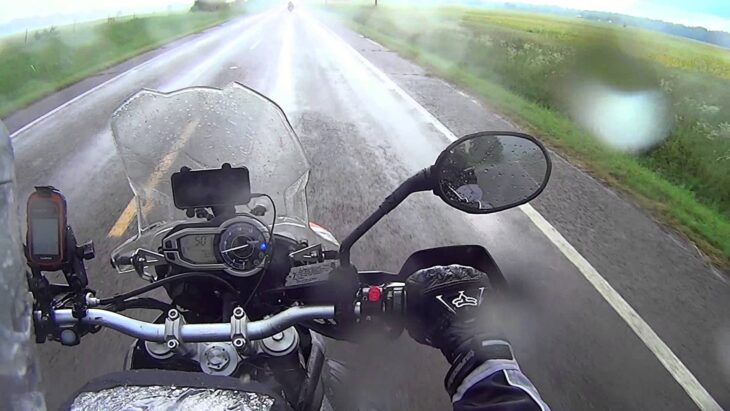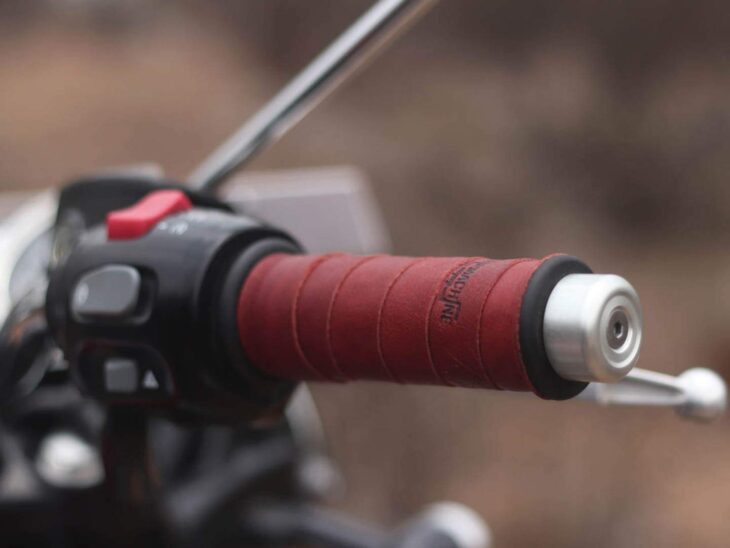Undoubtedly, on a motorcycle, you get a complete feeling of freedom in the journey. You ride in maximum reality, you are not held back by safety cages, nor is there air conditioning. Consequently, when the street is hot, you feel it with every cell of your body, as well as in the cold. It turns out that riding a motorcycle in rainy weather is the same minus as the plus for riding in good weather.
What are the challenges of riding in the rain?
There are two main problems that arise when riding a motorcycle in bad weather. The first is reduced visibility. The harder it rains, the more limited your visibility will be. Motorcyclist in this regard is more difficult than the motorist, because if the driver of the car the drops fall on the windshield and are removed by the wipers, the motorcycle driver will have to deal with the drops on the visor of his helmet. Therefore, visibility, which is already impaired because of the “wall of rain”, becomes even worse for the motorcyclist.
The second problem is a weaker grip on the motorcycle. There are several reasons for this:
- The asphalt becomes wet, and the rubber has less contact with it;
- Puddles appear on the road, and the moment you hit them, the wheel “slips” across the surface without actually making contact with the asphalt;
- During rain, the road can wash mud from the curb, various debris, etc., which also does not accompany good traction.
In addition, when riding a motorcycle in the rain, you should also keep in mind the insidiousness of puddles. What is under the water is unknown. There may be a small subsidence of asphalt, as well as a deep hole. This should also be kept in mind.
Here are factors to look out for when riding a motorcycle in rainy weather:
- You have poor visibility of the road, consequently, you are also seen worse;
- Your wheels have very poor traction.
Visibility

Source: tunedtrends.com
Any rain, heavy or light, your visibility is reduced either way. Visibility gets flooded; car drivers’ windshields get flooded as well. Pedestrians are in a hurry to run across the road, not looking carefully at the road. It turns out that everyone can hardly see each other.
There are special coatings on the visor, which improve the situation.
It is highly recommended to wear a reflective vest because visibility worsens, and thanks to the vest you will be easier to see.
Only motorcyclists who ride enduro motorcycles are not upset by the rain. You should learn from these guys how to ride in the rain. If you have such acquaintances, ask them how a motorcycle behaves with poor traction.
If you ride in the rain – bypass all the puddles. Not just because the grip is bad, but because of what’s hiding under those puddles. It may happen that you will run into an open manhole or a deep hole. So be careful, the harder the rain – the faster puddles become rivers and cover all the irregularities of the road.
Always leave space on the road for some maneuvers. Carefully watch the cars ahead of you, how much their wheels sink into puddles.
Grip

Source: amazon.com
I hope you understand that when it rains, everything washes up. All the debris, dust, oil, leaves, and other sludge now don’t lie by the curb, but under your wheels. The main tip is to wait for the rain to start to wash it all down the drain.
Also the braking distance almost doubles. That’s why don’t press against other cars and keep your distance. It’ll take you a little longer, but you’ll arrive in one piece.
Why does the braking distance increase? There is such a term as “aquaplaning” – it means that during driving on a wet surface, a water cushion is created. In simple words, it’s a rolling wave that the wheel in front of itself creates. Because of this, there is almost no traction. When trying to maneuver, the chance to leave your mark on the asphalt increases many times over.
It is of course possible to reduce the pressure in tires to increase the contact area of the wheel with the road. But it will not help to create a water cushion.
Another abomination of riding in the rain on a motorcycle is the splash from the wheels of cars.
Tips and recommendations:

Source: ultimatemotorcycling.com
- Don’t run over the marking lines. You can save yourself from doing it when the weather is dry, and you will save yourself from danger when it rains;
- Do not accelerate in front of traffic lights and crosswalks. If you have to slow down because of a pedestrian or red light, that area will be the most unfortunate for braking;
- During rain, dew and cold the pavement is full of surprises. Ventilation grills, sewer manholes, marking lines, oil stains and dirt become like ice in the rain;
- Be careful with puddles: they are more difficult to overcome on a motorcycle than on a car. And there may be surprises hidden in the puddle itself;
- The first hours of a new day are the most dangerous. Frozen wheels don’t grip the road well, and they need a little time to warm up.
- Good equipment. I suggest you get a raincoat and shoe covers. Also, if possible – take spare clothes to change into later;
- Wear a reflective vest;
- Do not rush and drive at a low speed;
- Do not make sudden movements and maneuver smoothly;
- Reduce weight as much as possible. Any extra pound impairs handling. Remove all bags and do not take a passenger;
- Brake with only two brakes. When you brake, your center of gravity shifts forward, where a “water cushion” is created. So if you brake with the front brakes in the rain, you are likely to fall over;
- Take into account the increase in the braking distance. Therefore, increase the distance somewhere two times.
Considering all the above-stated, my advice to you – if you can, wait out the bad weather.
Special thanks – DrivrHub.com
